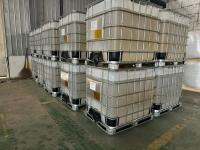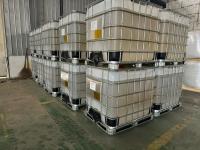Applications of Polyamine
Polyamines are organic compounds that possess multiple amine groups in their molecular structure. In industrial contexts, the term “polyamine” often refers to water-soluble, cationic polymers—sometimes made from reactions involving amine-based monomers such as ethylenediamine, dimethylamine, or other amine derivatives. Thanks to their positive charges and polymeric nature, polyamines can effectively bind to various negatively charged substances, ranging from suspended solids to dissolved organic matter. This characteristic has led to widespread use in water treatment, paper and pulp manufacturing, textiles, cosmetics, and several other domains. In the following sections, we will explore the chemistry of polyamines, their modes of action, and the specific ways they contribute to different industries, with particular emphasis on water treatment.
1. Chemical Nature of Polyamines
Polyamines have at least two amine groups in their structure and can exhibit linear, branched, or cyclic architectures. In water treatment and other applications, the term “polyamine” often describes synthetic polymers derived from reactions between amine monomers and other chemical building blocks, such as epichlorohydrin or formaldehyde. The result is a cationic polymer chain carrying multiple positive charges. This high charge density allows polyamines to interact with anionic species in aqueous environments. Unlike many inorganic coagulants, such as aluminum sulfate or ferric chloride, polyamines maintain their cationic nature across a broad pH range, making them particularly versatile in different water chemistries.
Because these polymers can be engineered to target specific molecular weights and charge densities, manufacturers can tailor polyamines to meet the needs of particular applications. This customization also extends to the balance of hydrophilic (water-loving) and hydrophobic (water-repelling) segments, which can impact how the polymer behaves in solution. Such flexibility in design underpins the widespread utility of polyamines across multiple industries.
2. Mechanism of Action in Water Treatment
One of the primary applications of polyamines is in water and wastewater treatment. When added to water containing suspended solids, colloids, and other contaminants, polyamines work primarily through charge neutralization. Most particulate matter in water, including clay, organic matter, and microbial cells, carries a negative surface charge. This mutual repulsion keeps the particles dispersed and prevents them from settling. When positively charged polyamine polymers are introduced, they neutralize or reduce these negative charges, causing the particles to aggregate.
Once the electrostatic repulsion is overcome, the aggregated particles can either settle out under gravity (sedimentation) or be skimmed off via flotation techniques. The overall result is clearer water with lower turbidity, fewer organic contaminants, and less risk of downstream equipment fouling. Another key advantage is that polyamines typically initiate rapid flocculation, which can shorten the treatment time and reduce the footprint needed for clarification or sedimentation equipment.
3. Coagulation and Flocculation
Within the broader category of water treatment, polyamines can play both the role of coagulant and coagulant aid. In some cases, polyamines act as the primary coagulant, carrying enough positive charges to destabilize negatively charged particles without additional chemicals. In other scenarios, they are used alongside inorganic coagulants—like aluminum sulfate—to enhance or “fine-tune” the coagulation process.
Their efficiency in bridging and floc formation is especially helpful for systems with challenging source water containing elevated levels of organic contaminants or very fine colloids. Moreover, because polyamines introduce fewer nonbiodegradable by-products compared to some inorganic coagulants, they can reduce the chemical sludge volume. This translates to less sludge handling, disposal cost, and overall environmental impact.
4. Sludge Dewatering and Conditioning
Another pivotal role of polyamines in water treatment is their contribution to sludge dewatering. After solid-liquid separation, the accumulated solids (sludge) often require mechanical dewatering using belt presses, centrifuges, or filter presses. Polyamines can be applied to the sludge as a conditioning agent, encouraging the release of water entrained within the flocs.
By improving the floc’s structure and binding properties, polyamines enhance water release, leading to a drier sludge cake and reduced sludge volume. This results in lower transportation and disposal costs and can sometimes allow facilities to meet stricter landfilling or incineration guidelines. The ability to handle sludge more efficiently provides both economic and environmental benefits, aligning with the broader shift toward sustainability in water management.
5. Paper and Pulp Industry
Beyond water treatment, the paper and pulp industry is a major user of polyamines. In papermaking, polyamines serve as retention aids, helping to retain fine particles, fillers, and fibers in the paper sheet during formation on the paper machine. Their cationic charge neutralizes the anionic charge on cellulose fibers, wood pulp, and other additives like clay or calcium carbonate.
In addition to improving retention, polyamines can serve as drainage aids, accelerating the removal of water from the paper sheet as it forms. Enhanced drainage improves the overall speed of the paper machine and may reduce the energy required for subsequent drying processes. The net effect is greater machine efficiency, more consistent sheet formation, and improved paper properties such as uniformity and strength.
6. Textiles and Dyeing Processes
Polyamines also play an important role in the textile industry, where they help with dye fixation and color removal. Dye molecules—often carrying anionic charges—can be neutralized by polyamines, facilitating their adherence to textile fibers. This can improve color vibrancy and fastness, as well as reduce the amount of dye lost in wastewater.
Additionally, many textile dyeing processes produce large volumes of colored effluent. By applying polyamines in the wastewater treatment stage, the colorants can be effectively flocculated and removed. This not only helps textile mills comply with regulatory discharge limits but also fosters a more sustainable production cycle by allowing water recycling within the facility if desired.
7. Cosmetics and Personal Care Products
In the cosmetics and personal care sector, certain polyamines find use as conditioning agents in hair products. The positive charges of these polymers can bind to negatively charged sites on hair or skin, providing benefits such as anti-static properties, improved manageability, and a smoother feel. For instance, amine-based polymers are sometimes used in shampoos and conditioners to reduce friction and leave hair looking shinier.
Moreover, in skin lotions or creams, small amounts of these cationic polymers may aid in emulsion stability and enhance the product’s overall sensory feel. Regulatory authorities typically assess the safety of such additives to ensure they don’t irritate skin or pose long-term health risks. Consequently, the formulator’s choice of polyamine depends on both performance characteristics and compliance with cosmetic regulations.
8. Agriculture and Nutrient Delivery
Interestingly, polyamines can also be employed in agricultural applications. Their capacity to complex with various ions can help in stabilizing and delivering nutrients more effectively. Certain formulations of fertilizer coatings may contain polyamines to minimize nutrient losses through leaching, thereby increasing the efficiency of fertilizers.
Moreover, some research has explored polyamines’ role in plant growth, as naturally occurring polyamines (e.g., putrescine, spermidine) are involved in many biological functions. Synthetic versions, when properly formulated, may assist with seed coatings or soil amendments that enhance germination or root growth. While not as widely established as water treatment or papermaking, these specialized uses underscore the versatility of polyamines in diverse segments of the economy.
9. Environmental and Safety Considerations
The use of polyamines, like all chemical additives, comes with environmental and safety considerations. Generally, polyamines are considered less hazardous than many inorganic coagulants because they do not significantly alter the pH of the treated water and produce less sludge. However, operators must still manage dosage carefully to avoid excessive polymer residuals in effluents, which can pose ecological or toxicity concerns if discharged at high concentrations.
On-site handling also requires proper measures to ensure worker safety, such as following recommended protective equipment guidelines. Most polyamine products have been evaluated under standard regulatory frameworks, and when used responsibly, they can provide a substantial net positive impact on wastewater management and resource conservation.
10. Future Outlook and Conclusion
As environmental regulations tighten and sustainability becomes a watchword across industries, polyamines will likely continue to evolve to meet new demands. Advances in polymer chemistry may yield polyamine variants tailored for specific contaminants or with minimized toxicity profiles. Innovations like green chemistry approaches, where biobased raw materials replace petrochemical-derived monomers, could further reduce the environmental footprint of these products.
In water treatment, polyamines are poised to remain a mainstay, given their proven effectiveness in clarifying water and dewatering sludge. In the paper and pulp sector, ongoing efforts to maximize recycling and reuse within mills may drive higher reliance on polymers that improve retention and drainage. The textile, cosmetic, and agricultural applications will continue to grow as companies look for efficient and eco-friendly solutions to their manufacturing and product development needs.
Ultimately, polyamines’ broad applicability can be attributed to their powerful cationic charge, chemical versatility, and proven track record in solving real-world challenges. From clarifying drinking water to aiding in the production of paper, textiles, and cosmetics, these polymers exemplify how specialized chemistry underpins modern industrial processes. As research pushes the boundaries of polymer science, we can expect polyamines to play an ever-more significant role in driving efficiencies, reducing waste, and helping industries align with the global push for sustainability






416_small.jpg)